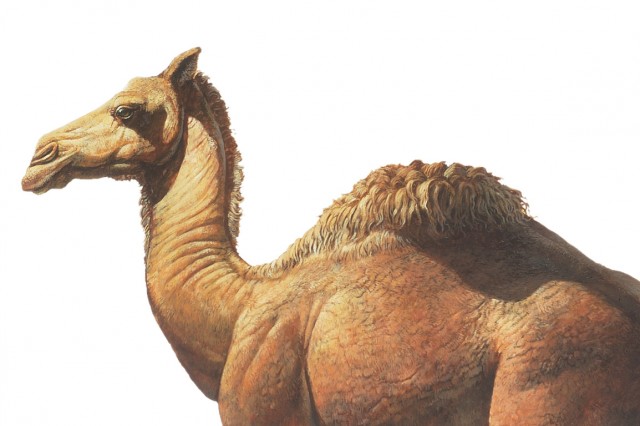Topsy the Camel
A camel that captured hearts and headlines rediscovered in NHM's Mammalogy Collections
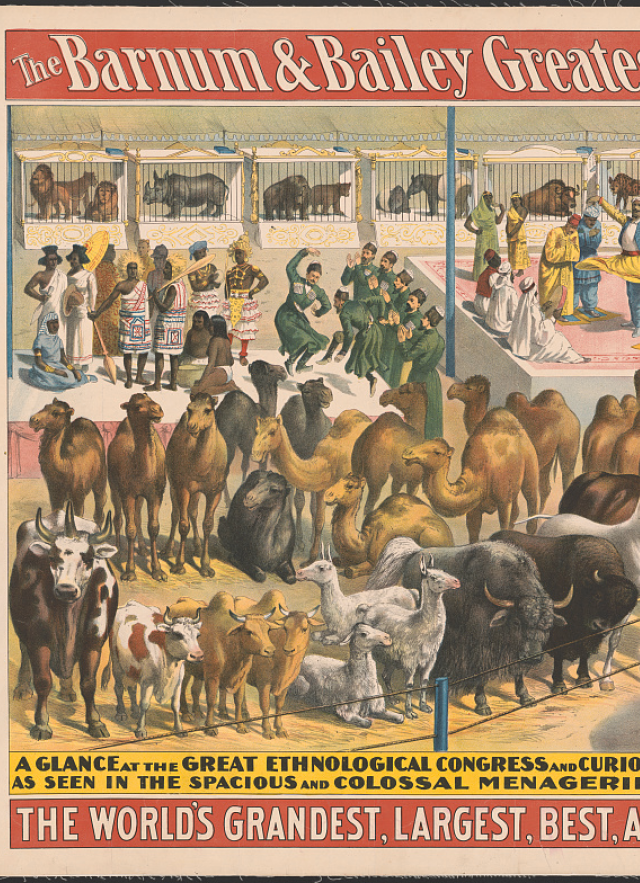
A recent request to borrow a camel skeleton led us down a curious path. The collection of bones were housed in 5 boxes containing the complete skeleton of a camel. The tag read ‘Camel. Griffith Park, Los Angeles Co, Calif. Park Department. 28 April 1934. Skeleton.’

For almost 90 years this specimen has been sent out for research to museums and universities, used as an anatomical teaching tool, and for public display and education, yet the history of the animal seemed to have been lost.
Learning more about this camel started with clues from the specimen, then the museum catalog, and finally the media. Species identification was the first step; this is a bactrian camel, Camelus bactrianus, based on the skull, and this specimen was determined to be a female based on the canine teeth. Next, to confirm this in the Mammalogy Department catalog.
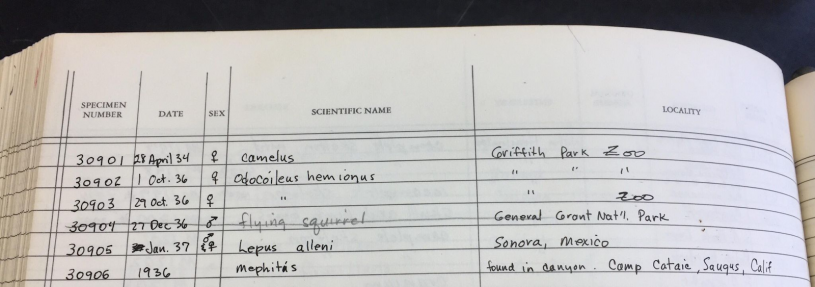
The Griffith Park Zoo opened in 1912 and operated for over five decades in the heart of Los Angeles, closing in 1966 after transferring animals to a newly constructed facility just a few miles away. During the years the Griffith Park Zoo was in operation, animals that passed away were often offered to the county museum as research specimens, including this camel. There is little information available about the individual animals that resided at the Griffith Zoo during this time, outside of a handful of ‘celebrity’ animals that captured both hearts and headlines.

Cross-referencing dates and camels residing at the location, it seemed likely that this individual was one such celebrity, and confirmed when finding her obituary in a local newspaper, published April 27th, 1934, the day before arriving at the museum. This was Topsy, a camel rumored to have been cremated, buried alongside an old camel friend of hers, or entombed at the site of the monument dedicated to her handler, Hi Jolly, in the Town of Quartzsite, Arizona, but rumors they all were, as here she is and her story deserves to be told.
The Tale of Topsy
In May of 1855, a US expedition sailed to the Mediterranean with the purpose of purchasing camels to test their strength and endurance for carrying heavy loads. A total of thirty-three animals were obtained at a cost of around $250 a piece, and included two bactrian, or two-humped, camels. They arrived in Indianola, Texas in May 1856, and after allowing the herd to rest they were moved to Camp Verde, Texas. This would become the headquarters of the United States Camel Corps. Topsy is believed to have been among this first group of camels brought to the US.

In late 1859, the US Army took charge of 28 camels and moved them to Fort Tejon, California. Several camels were later sent to Los Angeles and by February 1864 the army decommissioned the camels altogether; though they were strong, they were not easy to handle for a company accustomed to driving horses and mules. They were sold off for around $50 to anyone that wanted them.
Topsy ended up hauling salt and ore from mines in Nevada and Arizona until sometime after the end of the Civil War, but as camels were such an exotic and unusual animal, they were quickly purchased for use in circuses or for camel racing, and so began Topsy’s next chapter.
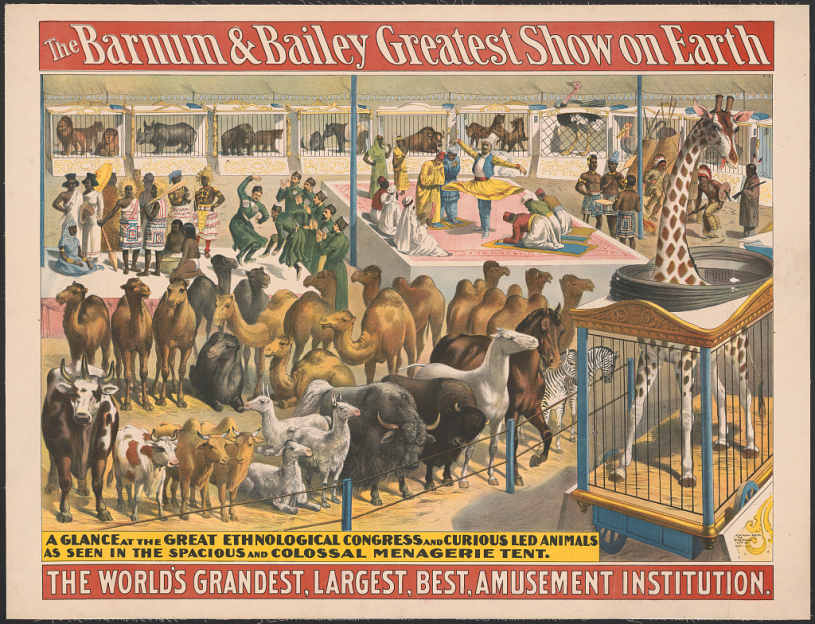
Topsy became a popular attraction at Ringling Brothers Circus, and she toured around the US with different circus outfits. It was during her time traveling with the circus that she was hit by a train. Her mate was killed in the crash, and both of her humps were severely damaged, leaving her with injuries to her spine that can clearly be seen in her skeleton today. She recovered from the accident, though her humps were both broken.
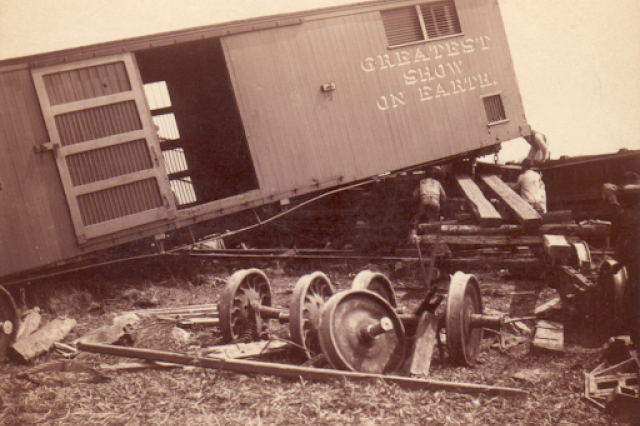
1889 circus train crash which led to the loss of 30 animals; 28 horses, a mule, and the largest known camel. It was initially reported that two camels had died in the wreck.
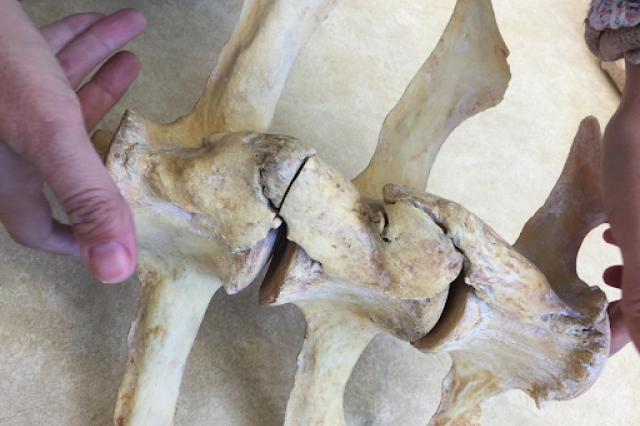
Kat Halsey
Fused thoracic vertebrae, after damage from being hit by a train and decades of hard work.
1 of 1
1889 circus train crash which led to the loss of 30 animals; 28 horses, a mule, and the largest known camel. It was initially reported that two camels had died in the wreck.
Fused thoracic vertebrae, after damage from being hit by a train and decades of hard work.
Kat Halsey
A Camel Career
While they continued to work her in the circus, film studios also started to use her. Camels became popular animals in film, being used to portray exotic locations, and they were called on by a number of production companies including Fox Studios. When the trends changed, she was donated by Fox to the Selig Polyscope Film Company, which was established in Los Angeles in 1909.
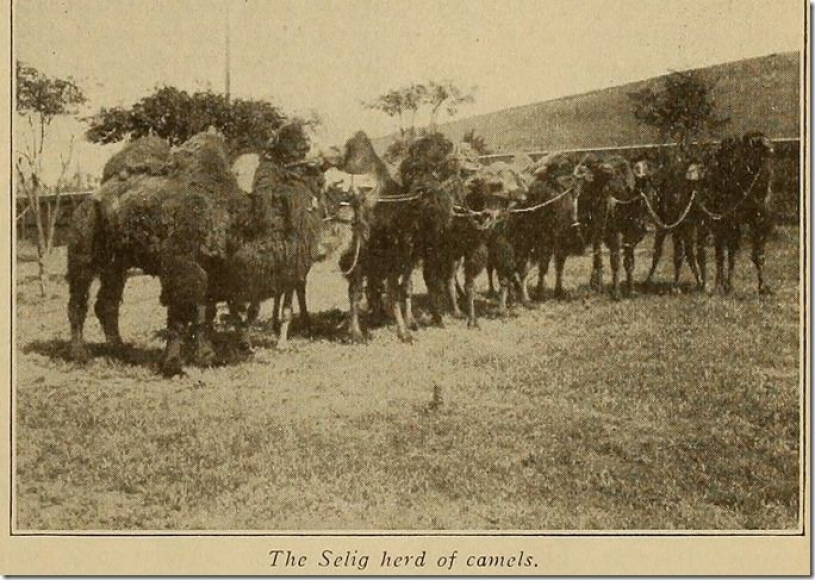
William Selig was a prolific filmmaker and the studio became a backlot for filming animals as the menagerie grew. The idea for a Selig Zoo was conceived in 1913 and construction began on 22 acres in East Los Angeles, now the site of Lincoln Park. Housing over 700 animals, including Topsy, the Selig Zoo was opened to the public in 1915.
Unfortunately the once great Polyscope studio fell into financial ruin, causing Selig to sell off the zoo by 1918. Even though it was a popular attraction in Los Angeles, it was not sustainable, and while the zoo went through a series of new owners, by the onset of the great depression it had been shuttered.

What of Topsy? Well, she was donated from the Selig Zoo to the Griffith Zoo sometime in the 1920’s, and there she lived out the remainder of her years. She was a well known personality at the zoo, instantly recognizable by her misshapen humps.
We know that she was an adult when she was brought to the US all those years ago by the US army, and we can account for about eighty years, but it was not until after researching her life, when she was once again being carefully packed to ship to a university, that we came across her femur, and the note written in years past. ‘“Topsy” 100 years old. Griffith Park Zoo’
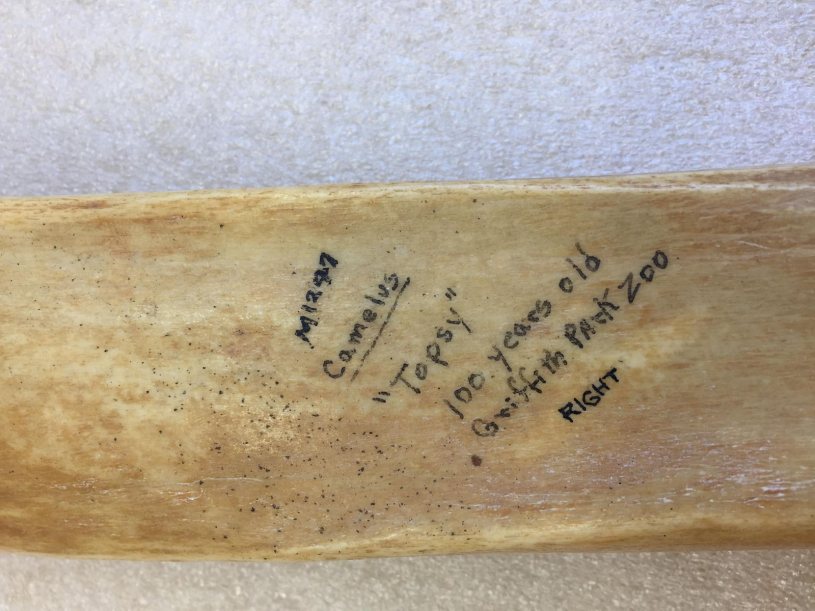
This incredible camel was one hundred years old. She was the last survivor of the Camel Corps. She had traveled across oceans, served in the military, worked in mines, been hit by a train, and entertained the masses in the circus, on the silver screen, and finally at the Griffith Park Zoo where she was loved by her keepers and the public alike. Now at the museum, she continues to work as a teacher, and towards research of her species. We thank you Topsy for your almost two centuries of service.
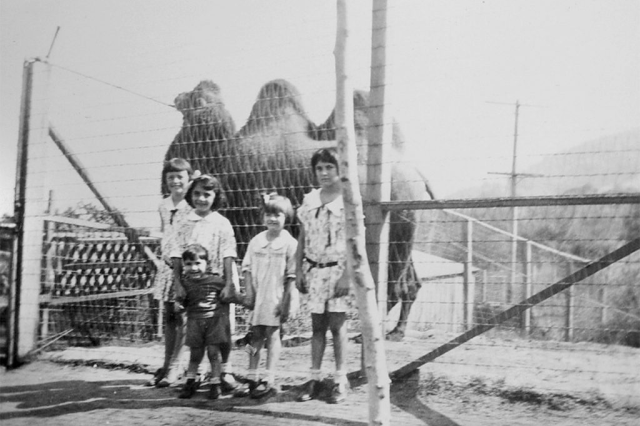
One of the original bactrian camels at the Griffith Park Zoo in the 1930’s.
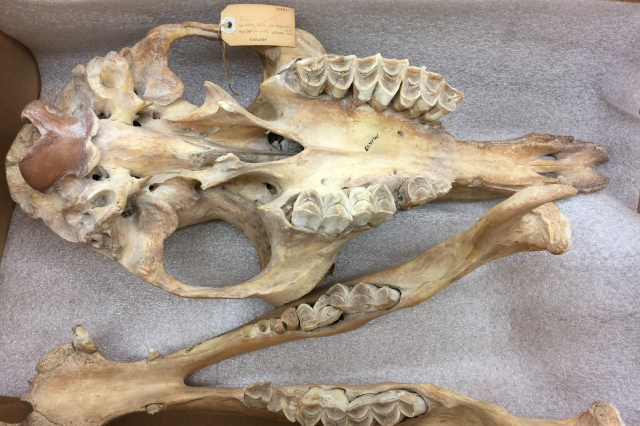
Kat Halsey
Topsy’s skull and jaw.
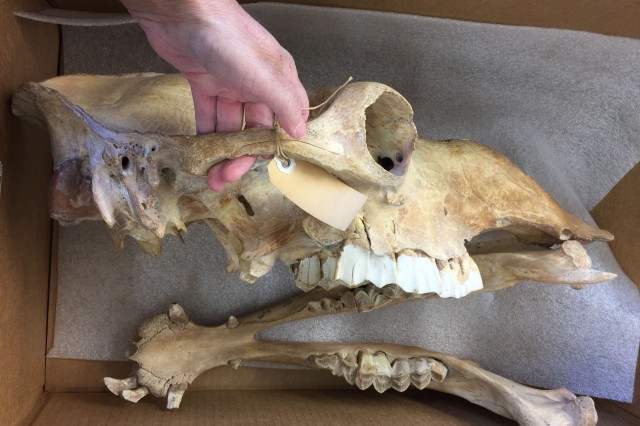
Kat Halsey
Topsy's skull and jaw from the side
1 of 1
One of the original bactrian camels at the Griffith Park Zoo in the 1930’s.
Topsy’s skull and jaw.
Kat Halsey
Topsy's skull and jaw from the side
Kat Halsey
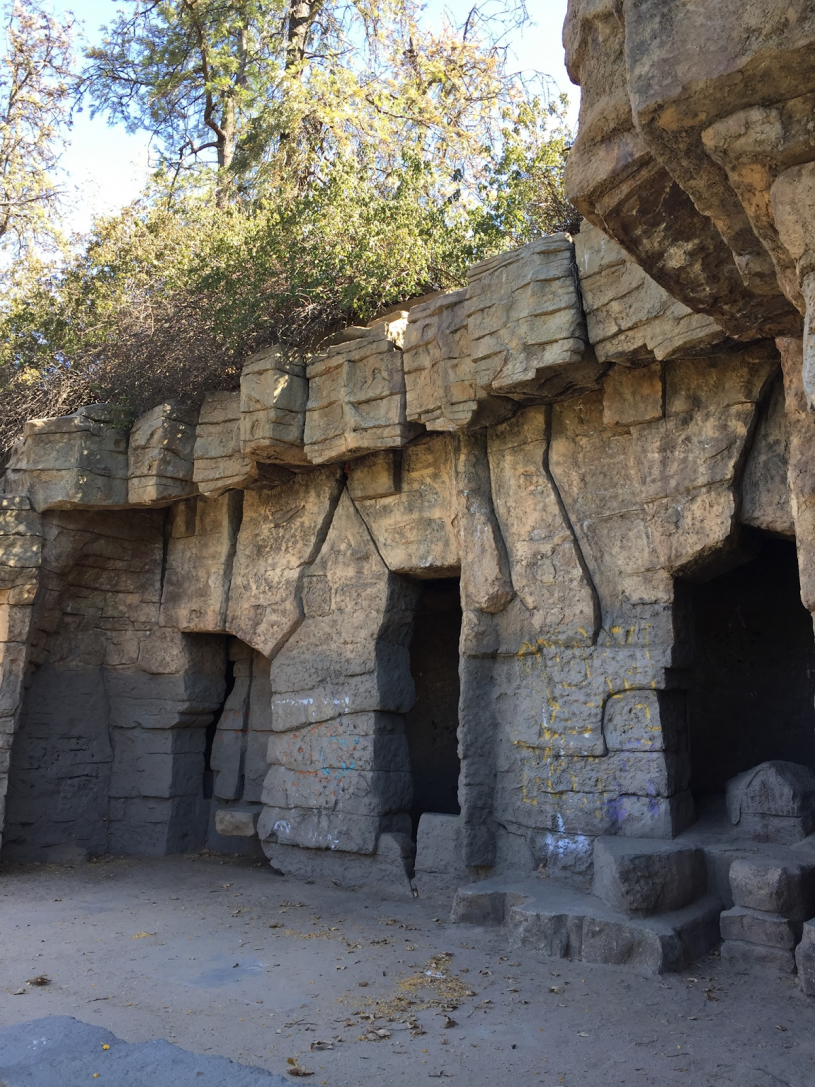
The Griffith Park Zoo, now known as the Old Zoo, can still be visited today. While Topsy’s corral is long gone, and you are more likely to encounter a squirrel than a zebra, big cat and bear grottos remain to be explored just a short walk from the parking area in historic Griffith Park. There are hiking trails that lead to some of the remaining bird and small primate enclosures and picnic tables and a lawn area for all to enjoy, set in this now iconic backdrop used in so many Hollywood feature films.
Griffith Park Old Zoo parking area, 4801 Griffith Park Dr, Los Angeles, CA 90027
Notes
* The note written on her bone states 100 years, and that would have been information provided by the zoo. We have tracked her history, and that covers about 80 years as an adult, however, the typical lifespan for this domesticated species is much less. There are both wild and domesticated bactrian camels, and the location she was purchased from would indicate that she was domesticated, and possibly offer a longer lifespan than wild caught individuals.
** Wild bactrian camels, Camelus ferus, are critically endangered and restricted to fragmented populations in the Gobi deserts of northwest China and Mongolia. There are less than 1,500 individuals left in the wild. Camelus bactrianus were domesticated about 4,000 years ago and moved around the globe through trade routes, used for transportation, for their endurance and ability to store nourishing fat in their humps, and surviving days without water. The domesticated camel now threatens the existence of the wild lineage through hybridization.
